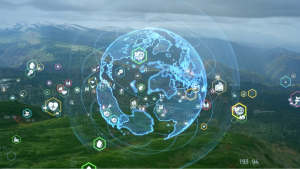The Model of Resource Efficiency
Our portfolios are systematically constructed based on extensive proprietary research. Through the standardisation of unstructured environmental data, our research process gives context and comparability to corporate environmental disclosures by objectively comparing the environmental balance sheets of companies across 34 industry sectors. Our evidence-based approach, through the stripping out of subjective data, measures sustainable action over intent.
The environmental data and sustainability insights we collect grow more significant by the year. Our resource efficiency database (MoRE) dates back to 2005, and covers over 1000 companies in the developed markets. We believe it is one of the most extensive repositories of environmental data in the world. This gives Osmosis a deep perspective on a company’s relative resource efficiency.
Thought Leadership

Is this the end of the free money experiment?
Central Banks got unlucky…perhaps, but if it hadn’t been for

As commodity prices increase, so does the importance of using them wisely
Waste efficiency has never been so important to a corporate’s bottom line

The Time Value of Carbon
The best time to invest in the environment was yesterday, the second-best time is now






